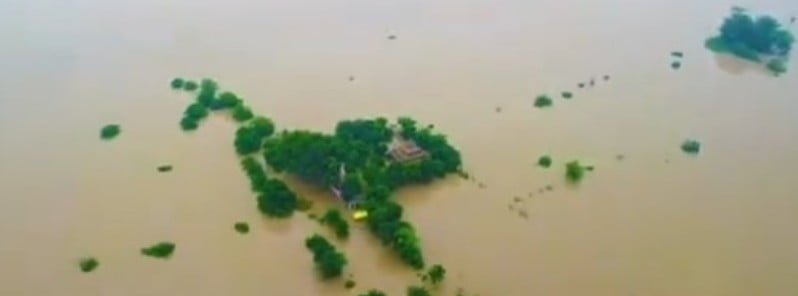Over 100 lives claimed by record monsoon rains in northern India

In a week marked by record monsoon rains, northern India faced severe flooding that resulted in over 100 deaths, extensive property damage, and widespread disruption. The worst-hit region was the mountainous Himachal Pradesh state, where floodwaters claimed at least 88 lives and injured more than 100 people.
- The monsoon rains across the country have already resulted in about 2% more rainfall than normal.
- India Meteorological Department (IMD) forecasts more heavy rains in the northern regions in the coming days.
Record-breaking monsoon rains led to massive waterlogging, road caves-in, and collapsed homes across large parts of northern India. Traffic was gridlocked, and educational institutions were forced to close their doors.
In Himachal Pradesh, located approximately 500 km (310 miles) north of New Delhi, the deluge was particularly devastating. Cars, buses, bridges, and houses were swept away by the floodwaters. The state government reported that nearly 170 houses collapsed, and another 600 suffered partial damage due to the heavy rains and ensuing landslides.
In Uttar Pradesh state, 12 people lost their lives to rain-related incidents since Wednesday, according to state government spokesman Shishir Singh. The fatalities included nine drownings, two lightning strike victims, and one individual killed by a snake bite.
The Indian-controlled section of Kashmir reported four deaths, while New Delhi recorded one fatality. In the capital city, residential areas near the Jamuna River experienced significant flooding. Roads, cars, and homes were submerged, necessitating the evacuation of thousands from low-lying areas.
The water level of the Jamuna River, flowing through New Delhi, reached a 40-year record of 207.71 m (681.5 feet) on Wednesday evening, July 12. This led to the displacement of nearly 30 000 people, who were moved to relief camps. Some schools were also converted into relief camps to accommodate those affected. Hundreds of individuals, along with their livestock, sought shelter under overhead road bridges in the eastern parts of the capital.
Despite New Delhi experiencing less rainfall in the past two days, the river level rose due to an abnormally high water discharge from the Hathni Kund barrage in the neighboring Haryana state, as per Arvind Kejriwal, New Delhi’s top elected official.
Rescue operations were launched in the Chandertal area in Himachal Pradesh, where nearly 300 people, mostly tourists, were stranded since Saturday, July 8 due to snowfall. Helicopters were deployed for the rescue mission, which included airlifting seven sick individuals on Tuesday.
In Punjab, floodwaters entered the Nabha Thermal Power Plant near Rajpura in Patiala forcing the shutdown of one of its 700 MW units.
The Army rescued 910 students and 50 others from the flooded Chitkara University near Rajpura, Punjab. The flood relief columns of its Western Command worked through the intervening night of Sunday and Monday to evacuate them and helped prevent the breaching of canals by the flood waters.
The monsoon rains across the country have already resulted in about 2% more rainfall than normal and IMD forecasts more heavy rains in the northern regions in the coming days.
To get a better picture of the amount of rain falling on parts of India over the past couple of days, the city of Chandigarh in Punjab, received more than 762 mm (30 inches) of rain over the course of 48 hours.
On Sunday, July 9, New Delhi recorded its wettest July day in just over 40 years when 153 mm (6 inches) of rain fell in 24 hours. It was New Delhi’s third-wettest July day of all time, behind 266.2 mm (10.48 inches) recorded on July 26, 1982, and 169.9 mm (6.68 inches) on July 21, 1956.
As northern India grapples with the aftermath of this disaster, the focus remains on rescue, relief, and recovery efforts.
The death toll is expected to rise as rescue teams reach more remote areas.
In 2013, monsoon rains caused widespread flooding in the state of Uttarakhand, killing more than 6 000 people.
References:
1 Record Monsoon Rains Have Killed More Than 100 People in Northern India This Week – AP – July 13, 2023
2 61 more people killed as rains continue to batter north India – CNN – July 11, 2023
3 Nearly two dozen dead following torrential monsoon rainfall in India – AccuWeather – July 10, 2023
4 IMD – Monsoon 2023 updates
Featured image credit: Arshad Ali (@Arshadali_IND)




Commenting rules and guidelines
We value the thoughts and opinions of our readers and welcome healthy discussions on our website. In order to maintain a respectful and positive community, we ask that all commenters follow these rules.